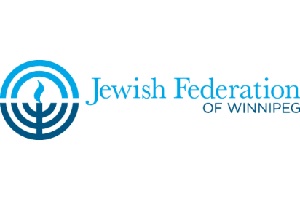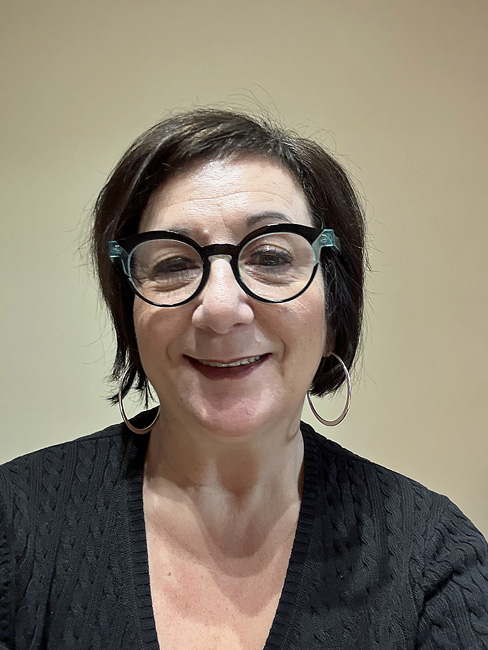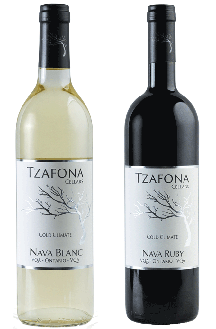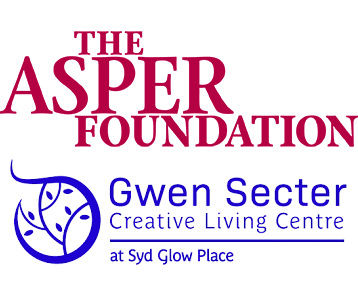Local News
Jewish Federation to increase allocations to beneficiary agencies by considerable amount
 By BERNIE BELLAN The Allocations Committee of the Jewish Federation has submitted its report to the Federation. The committee is recommending a total of $3,523,098 in allocations to the 12 beneficiary agencies of the Federation for the 2021/22 fiscal year, which begins Sept. 1, 2021.
By BERNIE BELLAN The Allocations Committee of the Jewish Federation has submitted its report to the Federation. The committee is recommending a total of $3,523,098 in allocations to the 12 beneficiary agencies of the Federation for the 2021/22 fiscal year, which begins Sept. 1, 2021.
That amount represents an increase of $163,000 in allocations over the previous year, and will be the single largest increase in allocations year over year in the history of the Federation. As we reported in our April 28 issue, the Combined Jewish Appeal did raise a record amount in 2020 – $6,439,994 (which has actually increased to $6,451,061 as of the time of writing), which is the reason the Federation is able to increase its funding of agencies by such a large amount. There were, however, some one-time donations that were earmarked for specific organizations and which were already allocated during the 2020/21 fiscal year.
Nonetheless, as Allocations Committee Chair Marcelo Aprosoff noted in the committee’s report, “The Committee was excited to have more money to allocate than ever before…They are conscious of the fact that some donations in this year were singular and will not be repeated. They would like to caution Beneficiaries not to expect or rely on continuing increases in the next few years, even as we remain hopeful about the future.”
Here are some highlights from the report:
Every single one of the beneficiary agencies will either receive an increase in allocations over the 2020/21 year or will at least receive the same (except for the Kaufman Silverberg Library, which is not actually a separate beneficiary of the Federation; it is lumped in with Gray Academy). In addition, if you read on you will see that additional funds that have come in the form of designated donations to various agencies will also mean that some agencies will be receiving considerably more in funding from the Federation than they had requested.
In the case of one agency, Jewish Child & Family Service, the amount the Allocations Committee recommended that agency will receive is actually $40 more than JCFS requested – $880,600, which represents an increase of $65,300 over the 2020/21 allocation.
The next highest increased allocation will go to BB Camp: $80,000, which represents a $20,000 increase over the previous year.
Gray Academy also received a $16,000 increase, while the Simkin Centre received a $15,000 increase.
Other notable aspects of the Allocations Committee’s report included an increase in allocation to the Jewish Learning Institute from $1,800 to $10,000. No other agency had suffered as dramatic a cutback in allocations in 2020/21 as the Jewish Learning Institute – from $5,642 in 2019/20 to $1,800 in 2020/21.
Other than noting that “The Jewish Learning Institute is reaching many more students virtually than they could in person”, there was no explanation given for the large increase in funding for the JLI.
The Committee did make specific reference to some specific challenges that agencies faced as a result of the pandemic:
“Despite almost endless challenges and disappointments, community leadership proved resilient, flexible, creative, adaptable and compassionate.
• Loss of life at the Simkin Centre was heartbreaking.
• Closures at the Rady JCC left huge gaps in social opportunities for every demographic group.
• Fundraisers were cancelled or scaled back, limiting the capacity of some organizations.
• The community has become accustomed to programs online that are free.
• Some individuals don’t do well in the virtual world and are even more isolated in a world of isolation.”
The table on this page offers readers the chance to compare allocations to agencies over the past seven years. In the meantime, here is a list of the increased allocations each agency will receive (in comparison with what they received last year), as recommended in the Allocations Committee report:
Aleph Bet Child Life Enrichment $3,000
BB Camp $20,000
Camp Massad $10,000
Gray Academy $16,000
Kaufman Silverberg Library* $1,500
Gwen Secter Centre $10,000
Kosher Meals on Wheels $5,000
Irma Penn School $2,400
Jewish Child & Family Service $65,300
Jewish Heritage Centre $2,600
Jewish Learning Institute $8,200
Rady JCC no change
Shalom Residences $4,000
Simkin Centre $15,000
*While Kaufman Silverberg Library’s allocation is listed as a separate item, it is part of Gray Academy’s allocation
**While Kosher Meals on Wheels is also a separate line item, it is run out of the Gwen Secter Centre and is part of Gwen Secter’s allocation

As mentioned, in addition to the allocations from the Jewish Federation given on the table on this page, the Federation will also be allocating funds to certain agencies that have come from donors who have designated that their donations go to those agencies. (Donors who have given at least $18,000 the previous year and donate at least as much in the current year are able to “designate” which agency will receive their donation.)
The total of those designated funds came to $520,098, bringing the total amount to be received by the beneficiary agencies to $3,523,098. Interestingly, of all the agencies, the only ones that will not be receiving at least as much as thay had requested are Aleph Bet Child Life Enrichment ($50,000 less than requested) and the Kaufman Silverberg Library (which will receive $20,000 less than requested).
Here is how much more some agencies will receive than their requested allocations:
Gray Academy $25,250
Gwen Secter Centre $30,091
Jewish Child & Family Service $256,681
Jewish Heritage Centre $66,100
Jewish Learning Institute $5,000
Rady JCC $110,650
On top of the allocations to beneficiary agencies the Jewish Federation will be allocating another $2,918,693 to various programs, including $269,900 to the following:
Birthright Israel
GrowWinnipeg
Hillel Winnipeg
March of the Living
PJ Library & PJ Our Way
Young Adult Division
Other funds
A further $1,052,732 in designated funds will be given, some to the programs just listed.
As well, $525,000 will be sent outside Winnipeg to such organizations as The Centre for Israel & Jewish Affairs.
Finally, the Federation operates a number of initiatives, such as government relations, combating anti-Semitism, 50+ programs, and many more. The total for those initiatives plus operations of the Federation comes to $667,472.
Local News
Shalom Residences board announces hiring of Tamar Barr as new executive director

By BERNIE BELLAN The board of Shalom Residences, the agency that provides housing and support for adults in our community who have special needs, will soon have a new executive director, effective December 22.
Tamar Barr, whose name is well known in the Jewish community, is set to take over from Mike Goldberg, who will be leaving Shalom Residences after having served as executive director since the spring of 2022.
It was in March 2022 that the previous – and to that point, only executive director Shalom Residences had ever had, Nancy Hughes, retired from the position after 31 years at the helm. Mike is moving on to take a senior position elsewhere.
Shalom Residences maintains six different houses in Winnipeg on: Enniskillen Avenue (home to the very first Shalom Residence), Hartford Avenue and Seven Oaks Place – all three of which are in West Kildonan; McAdam and Cathedral Avenues – in the North End; Daffodil – in Garden City; and Oxford Street, in River Heights.
The smallest home has three residents and the largest one – five.
Twenty-nine adults live in those homes, while another nine live in supported independent living apartments, and three adults are supported in community outreach.
Tamar Barr is probably best known in the community for her many years at both the Rady JCC and its predecessor, the YMHA. Tamar served as program director at both the YMHA and the Rady JCC from 1990-2013 and was Assistant Executive Director at the Rady JCC from 2013-2021.
Since then Tamar has filled a variety of different roles, including working in donor relations at the University of Manitoba; project coordinator at the Mennnonite Heritage Centre Gallery; and Alternate Funeral Director for Congregation Shaarey Zedek.
Tamr obtained her B.A. and Bachelor of Social Work from the University of Mantioba; and her Masters of Social Work from Yeshiva University in New York.
Tamar had this to say about her moving into the role of executive director of Shalom Residences: “Stepping into the role of Executive Director feels like a full-circle moment for me. Some of my most meaningful and formative experiences have been alongside people living with intellectual disabilities, whose strength and spirit continue to inspire me. I am honoured to join an organization rooted in Jewish values and dedicated to supporting individuals living dignified, connected and fulfilling lives in a community-based setting.
“I look forward to bringing my enthusiasm, experience and compassion to support and strengthen Shalom Residences important mission.”
In welcoming Tamar as Shalom Residences’ new executive director, the board of Shalom Residences said: “Shalom Residences Inc. is pleased to announce the hiring of Tamar Barr as our new executive director effective December 22, 2025.
“Tamar has a Masters degree in Social Work and brings a wealth of management experience in the non-profit sector and at the Rady JCC. She is looking forward to meeting our residents with intellectual disabilities, families and staff as she transitions into her new role with the kind assistance of our current executive director, Mike Goldberg.
“We wish to thank Mike for his outstanding contributions to Shalom Residences and wish him well in his new leadership role at Community Financial Services where he will be assisting individuals and families facing financial challenges.”
Local News
Canadian produced kosher wine now available in Winnipeg

By BERNIE BELLAN With the imposition last February of a ban on the sale of American liquor in Manitoba, the only type of kosher wines that were available here were from Israel, specifically wines produced by the Galil winery.
Since the latter part of September, however, kosher wines produced by a Canadian winery are now available in Manitoba liquor marts, also the Kenaston Wine Market.
The wines – a red and a white, are produced by a winery known as Tzafona Cellars – located in the Niagara region of Ontario.

On Tuesday, December 2, Rabbi Avraham Gislason, who is a a rabbi in Thornhill, as well as a Tzafona Cellars winemaker, spoke to a large crowd at the Jewish Learning Centre, where he not only explained how kosher wine differs from non-kosher wine, he brought along bottles of five different wines produced by Tzafona Cellars for members of the audience to taste.
So – what makes a wine kosher? you might ask. According to the internet, “A wine is kosher if it is made according to Jewish dietary laws… with strict supervision and handling by Sabbath-observant Jews from the crushing of the grapes to the bottling of the finished product. The winemaking process must use only kosher-certified ingredients, such as yeast and fining agents, and rabbinically-approved equipment.
Rabbi Gislason himself started Tzafona Cellars in 2014. According to the Tzafona website, Rabbi Gislason saw that the “soil, air, and microclimate of the Niagara Peninsula all come together to create an up-and-coming world class wine region, yielding a unique experience that cannot be recreated anywhere else in the world.”
While he appreciated the quality of the wines being produced in the Niagara region, there was one problem: None of the wines were kosher.
According to the Tzafona website, “Starting with the 2014 vintage, Tzafona began to produce kosher wines using the same techniques and high-quality grapes used in producing other premium non-kosher wines. Since then, Tzafona has continued to produce a variety of different wines, namely Cabernet Sauvignon, Riesling, and Chardonnay. We have produced award-winning Icewines in the Vidal, Riesling, and Gewurtzraminer varietals. Tzafona is the only kosher Icewine producer in North America. Their Cabernet Franc Icewine won a Gold Medal at the All Canadian Wine Championships in 2025.
In 2016 we began to produce a line of refreshing semi-sweet wines under our brand “Nava Blanc” and “Nava Ruby.” (It is the Nava Blanc and Nava Ruby wines that are now available in Manitoba). Both of these wines are Tzafona’s bestsellers here in Canada and the USA.
The process of getting Tzafona wines approved in Manitoba was set in motion by Winnipeg marketing specialist Marsha Friedman, who for many years has worked as a marketing consultant and sales agent for businesses looking to offer premium kosher foods to their customers.
Her business, Excellence & Kosher, focuses on identifying unmet needs in the market. “I see a need and I try to fill it,” Marsha says.
“We also ensure that the most needed Kosher food products for the stores that carry Kosher are available, including Canadian Kosher wine,” she adds.
Marsha explains that she approached Tzafona—the only truly Canadian kosher wine company—some time ago with the idea of opening the Manitoba market for them and introducing their wines to local consumers.
Afterward, she contacted tManitoba Liquor and Lotteries (MBLL), which agreed to begin carrying two Tzafona wines: Nava Ruby (Red) and Nava Blanc (White).
Since that initial success in making Tzafona wines available for purchase in Manitoba, Marsha says that she and her daughter Shira have been making similar progress in Alberta and hope to expand into the British Columbia market as well.
For more information about Tzafona Wines, including the addresses of stores in Winnipeg and throughout Manitoba that carry their products, please visit the MBLL Liquor Marts website:
https://www.liquormarts.ca/liquormarts
Go to “Find a Product” and type “Tzafona.” Both wines will appear. Select the wine you’re interested in, then click “Store Inventory.” A list of all MBLL Liquor Marts that carry that product will be displayed.
Marsha adds that “We are hoping to have more listings of Tzafona wines available for Pesach this year, and we will be presenting them to MBLL for their approval.
“L’Chaim!”
Local News
Thanks to a Grant from the Asper Foundation the Gwen Secter Centre will Soon Begin Offering Free Kosher Shabbat Meals to Jewish Seniors

By BERNIE BELLAN In these increasingly difficult times – when so many families are finding it difficult to make ends meet, one group in society in particular is being hard hit by escalating food prices: seniors.
As food prices continue to rise, many seniors are struggling to afford many food items that they had always enjoyed previously. And, when it comes to Jewish seniors who might want to continue to remain kosher, the struggle is even more difficult – as the price of kosher meat and chicken has gone up even faster than the price of nonkosher meat and chicken.
Now, in an attempt to provide a modicum of comfort to some of those Jewish seniors, the Gwen Secter Centre, with support from the Asper Foundation, is about to begin providing kosher Shabbat meals for up to 50 Jewish seniors on a weekly basis.
Here is how Becky Chisick, executive director of the Gwen Secter Centre, describes what is going to be called the “Mitzvah Meal Program” will work: “We will be launching a new food security program supported by The Asper Foundation. Food security is a going concern is our community, especially with seniors living on a fixed income. The Mitzvah Meal program will ensure no one in the Jewish community is unable to celebrate Shabbat and other important Jewish holidays throughout the year. This program will transform the lives of so many seniors.
“Gwen Secter Creative Living Centre will be working closely with Jewish Child and Family Services to identify those who qualify for the program. There are many seniors that are not able to access Kosher Meals on Wheels (which is already a subsidized program thanks to the Jewish Federation), due to financial restrictions. The Mitzvah Meal Program, Supported by The Asper Foundation, has different criteria than the Kosher Meals on Wheels program.
“During the pandemic, we quickly realized how many seniors were not able to celebrate Shabbat due to lack of resources and finances. The Mitzvah Meal program will provide up to 50 individual low-income seniors with a healthy and fresh Shabbat (meat) meal, including chicken soup, challah bun, full entree of chicken, starch and vegetables, and dessert. In addition, they will receive special holiday foods and tools, so everyone is able to celebrate Shabbat and other Jewish holidays. For example: latkes and sufganiyot for Chanukkah, hamantaschen for Purim, etc. Those that are able to light candles at their residence will also get Shabbat and Chanukkah candles.”
Becky added, however, that “We still require close to $10,000 to ensure we can accommodate the max for a year and I plan to apply to The Jewish Foundation for the support.”
We contacted Anita Wortzman, president of the Asper Foundation, to ask her how the Asper Foundation became involved in this program. Anita responded: “The Asper Foundation is thrilled to support Gwen Secter Creative Living Centre and their new Mitzvah Meal Program. We believe that seniors in our community should be treated with the dignity, comfort and connection that Shabbat and the Jewish holidays bring. The long-term work of Gwen Secter Living Centre in delivering kosher meals on wheels, makes this a wonderful extension of that service to the Jewish community.”
As to how recipients of the “Mitzvah Meals” are chosen, we received this response from Alexis Wenzowski, Chief Operating Officer of JCFS: “Our priority will be ensuring that low-income seniors, those experiencing social isolation, and those facing mobility or transportation challenges are referred into the Gwen Secter program in a timely and effective manner.
“We have shared information about the Gwen Secter Food Security for Seniors Program across our Mental Health and Addictions, Settlement and Integration, and Older Adult Services teams. These program areas collectively serve some of the most marginalized and isolated seniors in our community, many of whom face complex barriers to accessing nutritious kosher food. We foresee there to be many referrals from these JCFS (programs into the Gwen Secter initiative. We are grateful and excited there will now be a formalized cooked meal Shabbat program for food insecure seniors.”
Alexis added this note about the number of individuals within our Jewish community who seek assistance from JCFS as a result of financial pressures: “JCFS is keenly aware that financial stressors and the cost-of-living crisis is impacting everyone. Food insecurity continues to be a significant and growing concern across our community, as it is in all communities. In the past year alone, our Asper Empowerment Program supported 179 unique households, with 7,542 kg of food security supports. An additional 122 households received employment and financial supports — including interest-free loans, grants, gift cards, and budgeting guidance — underscoring the breadth of need we are seeing. People are struggling.”
As noted, however, while Becky Chisick stated that the Asper Foundation funding will help to get the program going, the Jewish Foundation is being approached to provide additional funding in order to guarantee that the program can continue for at least one year. In the meantime though, if you would be interested in making a donation to help fund the program, Becky encourages you to make your contribution to the Gwen Secter Centre, stipulating that you want the money to go to the Mitzvah Meal Program.
One more note: While there are already some volunteer drivers in place once the program begins, more are still needed. To volunteer as a driver, contact Vanessa Ordiz at the Gwen Secter Centre: vanessa@gwensecter.com or phone 204-339-1701. Volunteers will be provided quarterly tax receipts for their service.
At the same time, by volunteering as a driver, it will allow for meaningful connections between clients and volunteers. For many clients this may be the only person they connect with that day.


